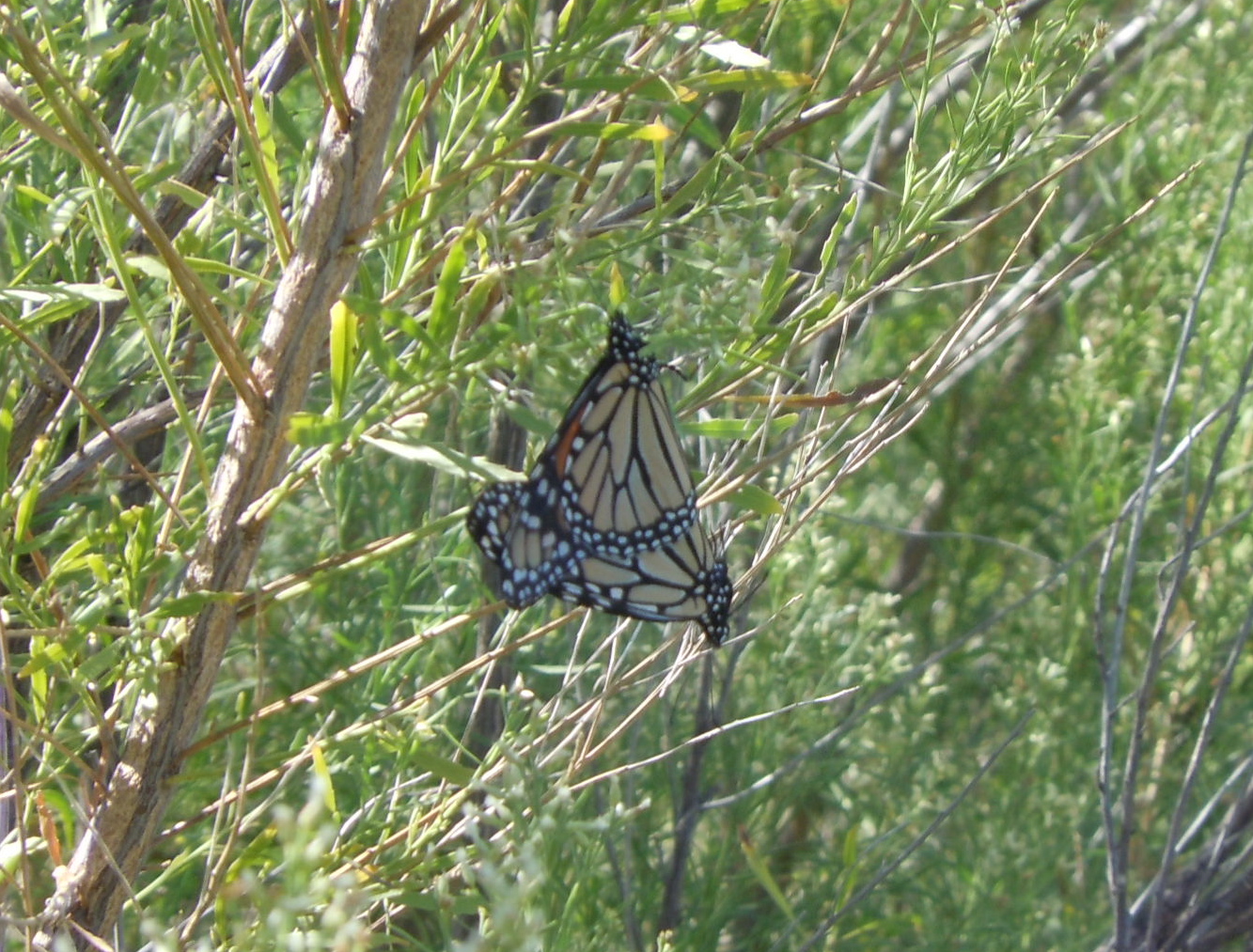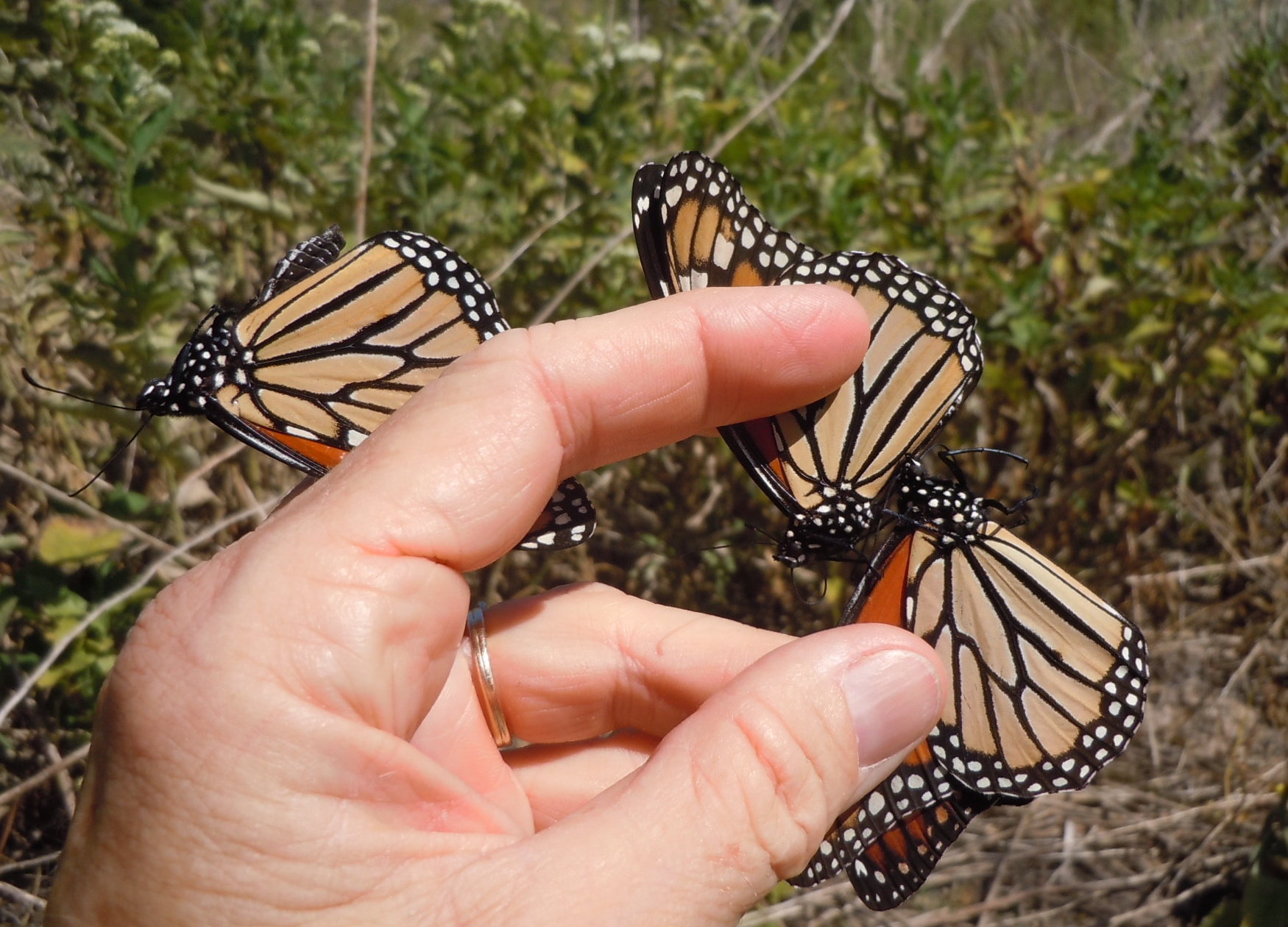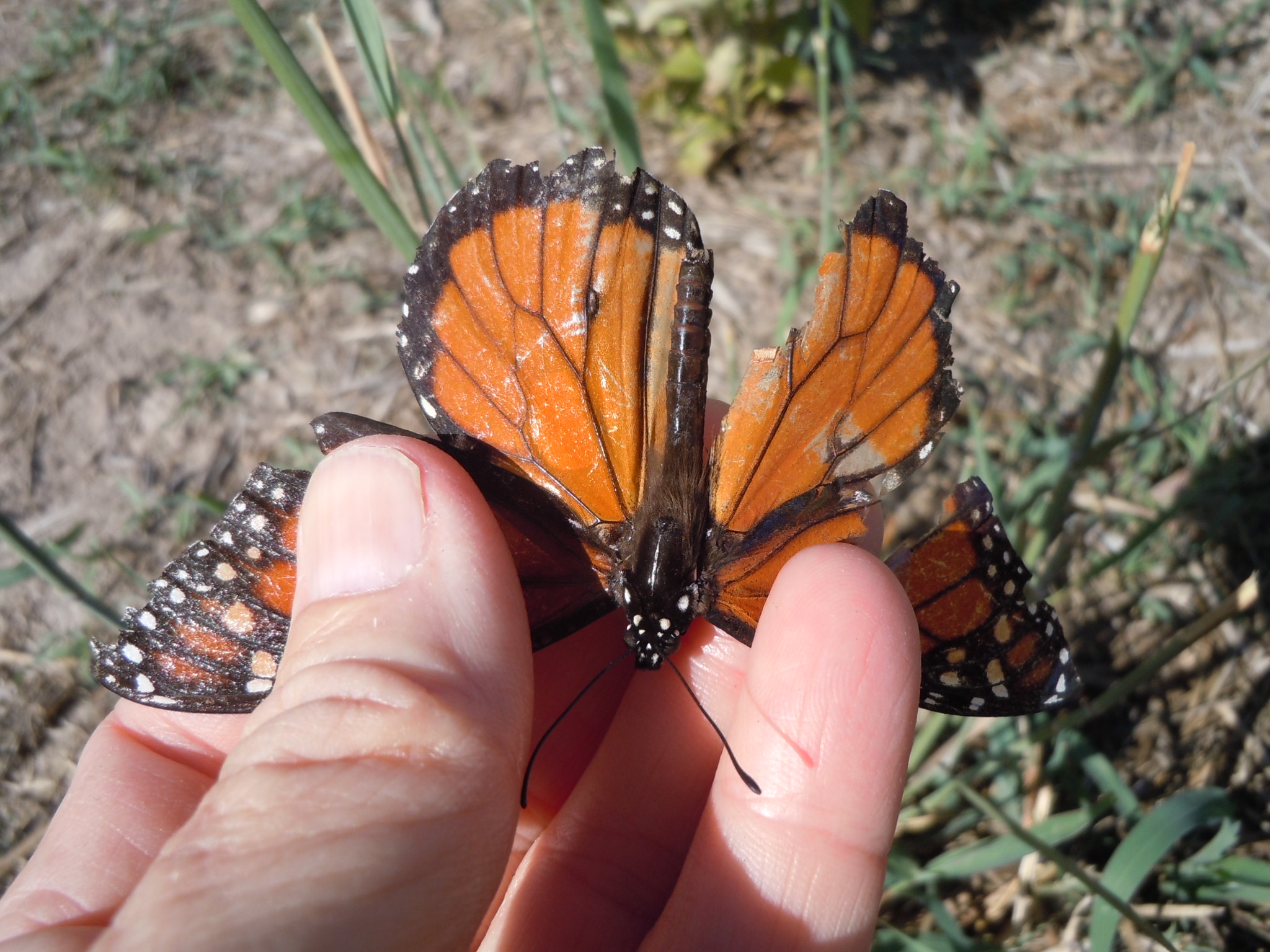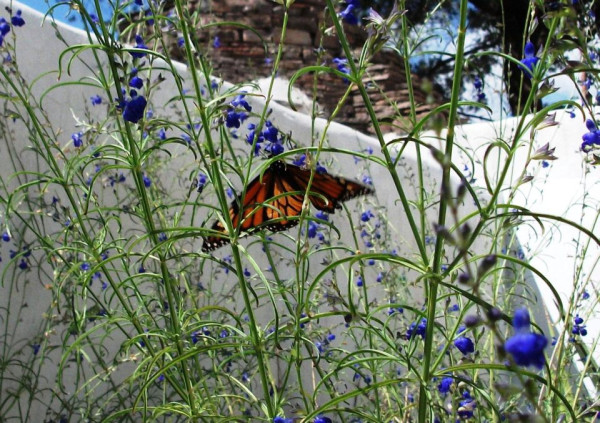They’re here. But once again, Monarch butterflies confound and intrigue with their interesting choices and unpredictable behaviour as they make their annual migration to Mexico.
Scientists and enthusiastic observers like myself were guessing that the millions of Monarch butterflies that pass through Texas each Fall would hug the Texas
Hill Country streams and river systems or gravitate to the Gulf Coast where more moisture might offer occasional flowers for nectaring.
But observers contributing to the Monarch Watch D-Plex listserv, an email list established by Monarch Watch founder Dr. Chip Taylor, have Monarchs massing and roosting in West Texas, the most parched area of our state. Excerpts from emails follow.
Matt York, Marathon, Brewster County: Gage Gardens, here in Marathon Paradise City, had conservative reports of ‘at least 2k’ monarchs. Much of that guesstimate gathered from roosting clusters in trees. In town we still had them flitting about, generally southward.

Monarch butterflies mating on the Llano River, 10/2/2011
Dave Marqua, near Ft. Davis: I am seeing many Monarchs heading south. Last Friday, I went to Alpine (about 50 miles from my house up here in the mountains) and noticed several Monarchs crossing the road and heading south….every time I go out of the house I see one or two, heading south. There is never a group.
Penelope Melton, 12 miles south of Alpine: There were an uncountable number of Monarchs resting on the cottonwood trees at our dirt tank Saturday evening 10/1. They spent the day Sunday nectaring on Bacharris, Beebrush and some kind of sunflower and left Monday AM.
Over on Twitter, the Texas Parks and Wildlife Twitter feed posted the beautiful photo above with this tweet: Monarch migration time in Texas. This one stops for food at Indian Lodge in the Davis Mtns.

Lucky swing: three Monarch butterflies netted in one swoop on the Llano River

Damaged male Monarch butterfly–probably won’t make it to Mexico
We saw hundreds of Monarch butterflies on the Llano River again this weekend, but they weren’t massing as they usually do. Almost all of the 104 we tagged were netted nectaring on Frostweed in the Chigger Islands that dot the Llano between Mason and Junction. Most were in fine shape, but some, like the one above, were beat up from their travels–unlikely candidates for a Mexico arrival. We witnessed one incident of mating behaviour, but no eggs were present on the Swamp Milkweed.
Occasional Monarchs have stopped by my front yard in Austin this week as well, laying eggs and taking quick sips of lantana.
Peak migration is upon us (through October 22 or so), as predicted by Monarch Watch for our latitude, so keep your eyes open for them.



I enjoyed reading your very informative post and look forward to our visit.
Thanks, Kip. I think it will be a fun outing.
What is that blue flower??
According to Texas Parks and Wildlife Twitter staff: “The pretty blue plant attracting the monarch was narrow leaf salvia.”
Looking for my blog brought me to your exciting blog info. It was regarding the Oklahoma-Texas drought cancelling our Monarch festival because of the heat, drought, massive fires this summer. We have seen only a few Monarchs flying south this year, and much of their nectar plant food did not survive the weather problems, probably causing additional deaths before they reach Mexico. Glad to see that you have more encouraging news about their journey.
If you’d care to explore, the blog is at frogyfish@hubpages. Thanks for all your work on assisting and exemplifying this marvelous creature! I’ll have to direct traffic your way, you’re stupendous!
Thanks for the kind words. The migration is just about over now, but we’re looking toward next year. We still have Monarchs in Austin, San Antonio and on the LLano. Just hatched a cat today.
This is strictly adcneotal, but monarchs were plentiful in our Va. garden beginning in early June, and here in northern Mass., they have been abundant since at least early July. In short, I haven’t noticed any substantial population change from previous years; if anything, they are more numerous this year. We do keep a big patch of milkweed in the meadow and plant swamp milkweed, monarda and other nectar plants in the garden, all attractants which may raise the numbers which we see.